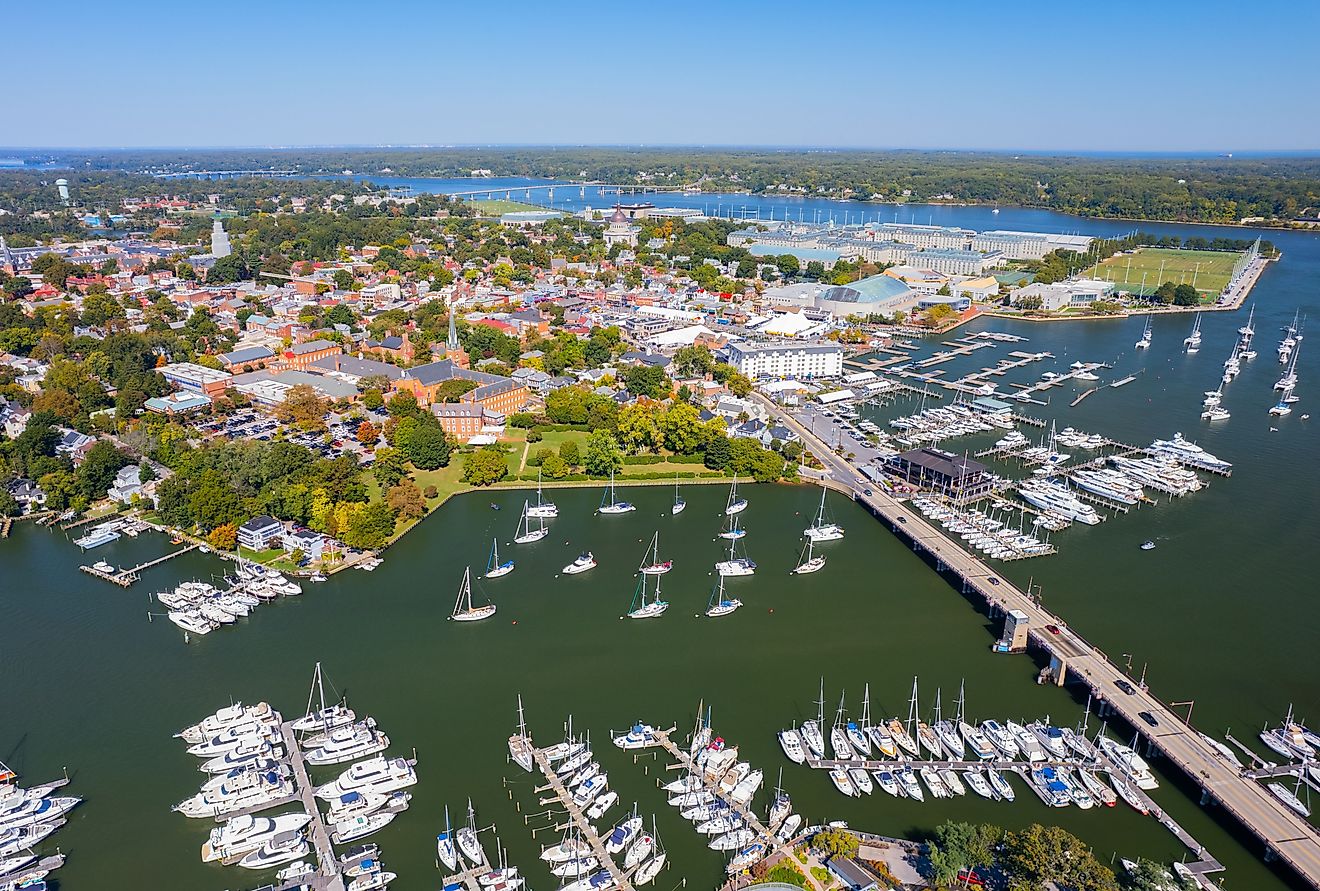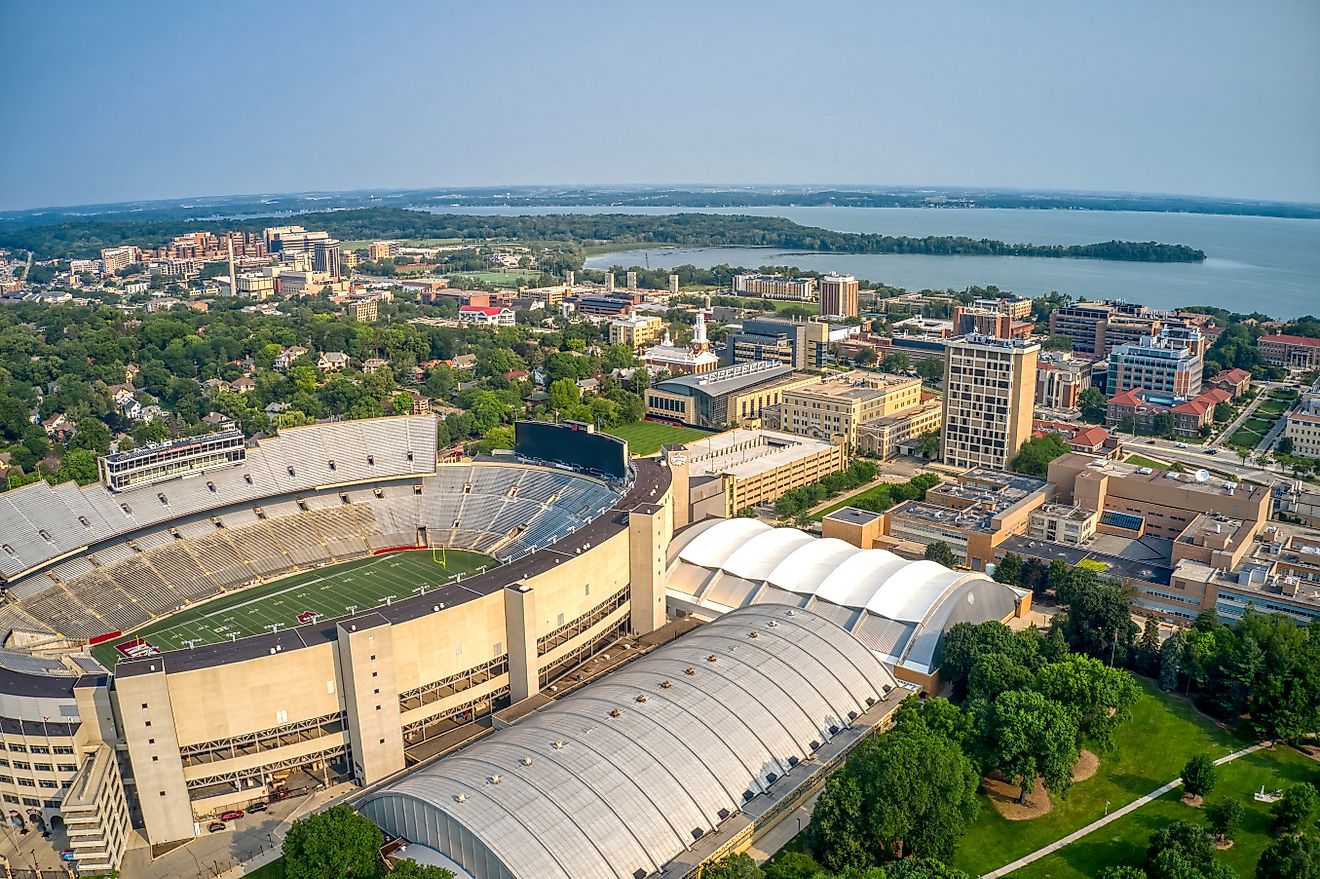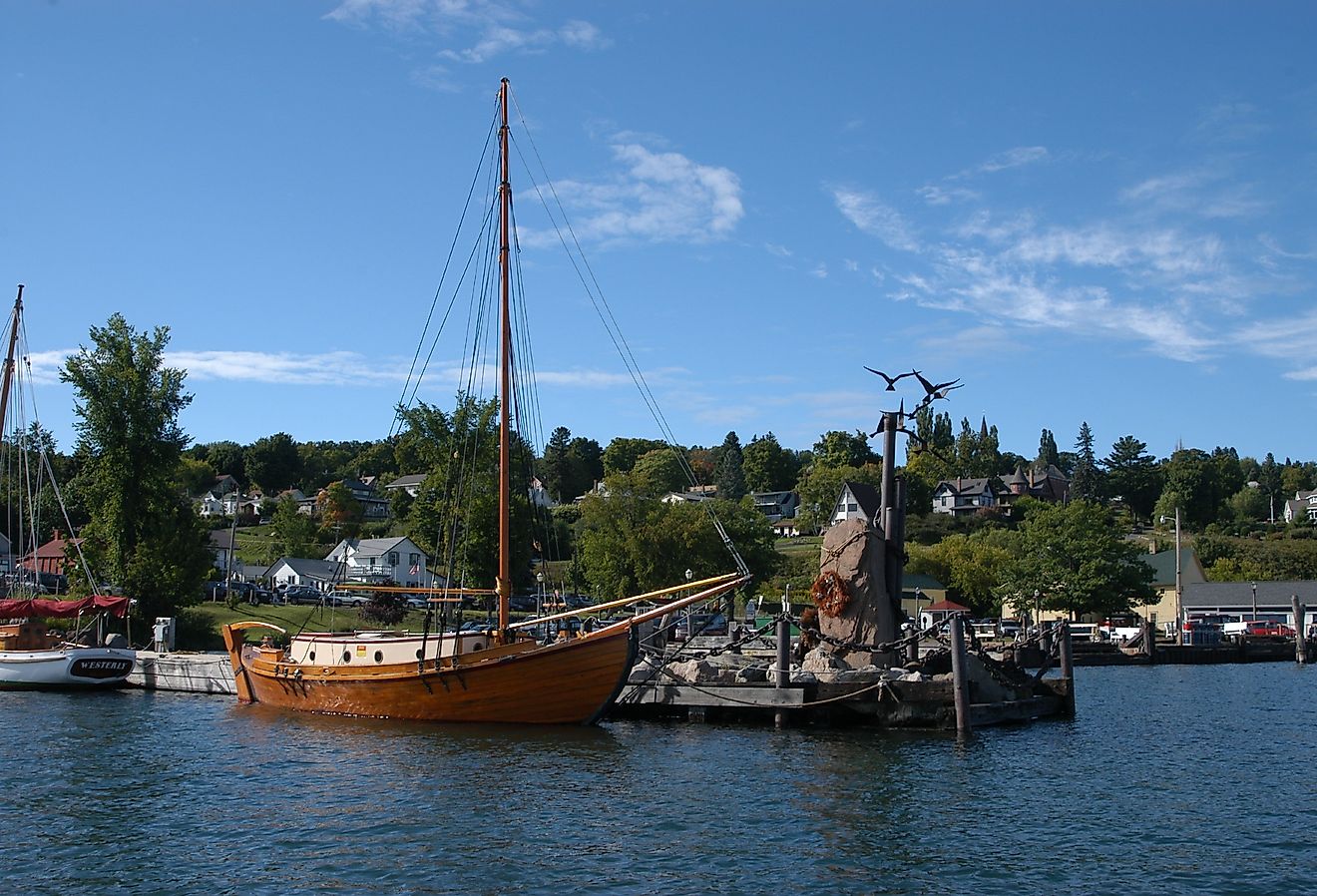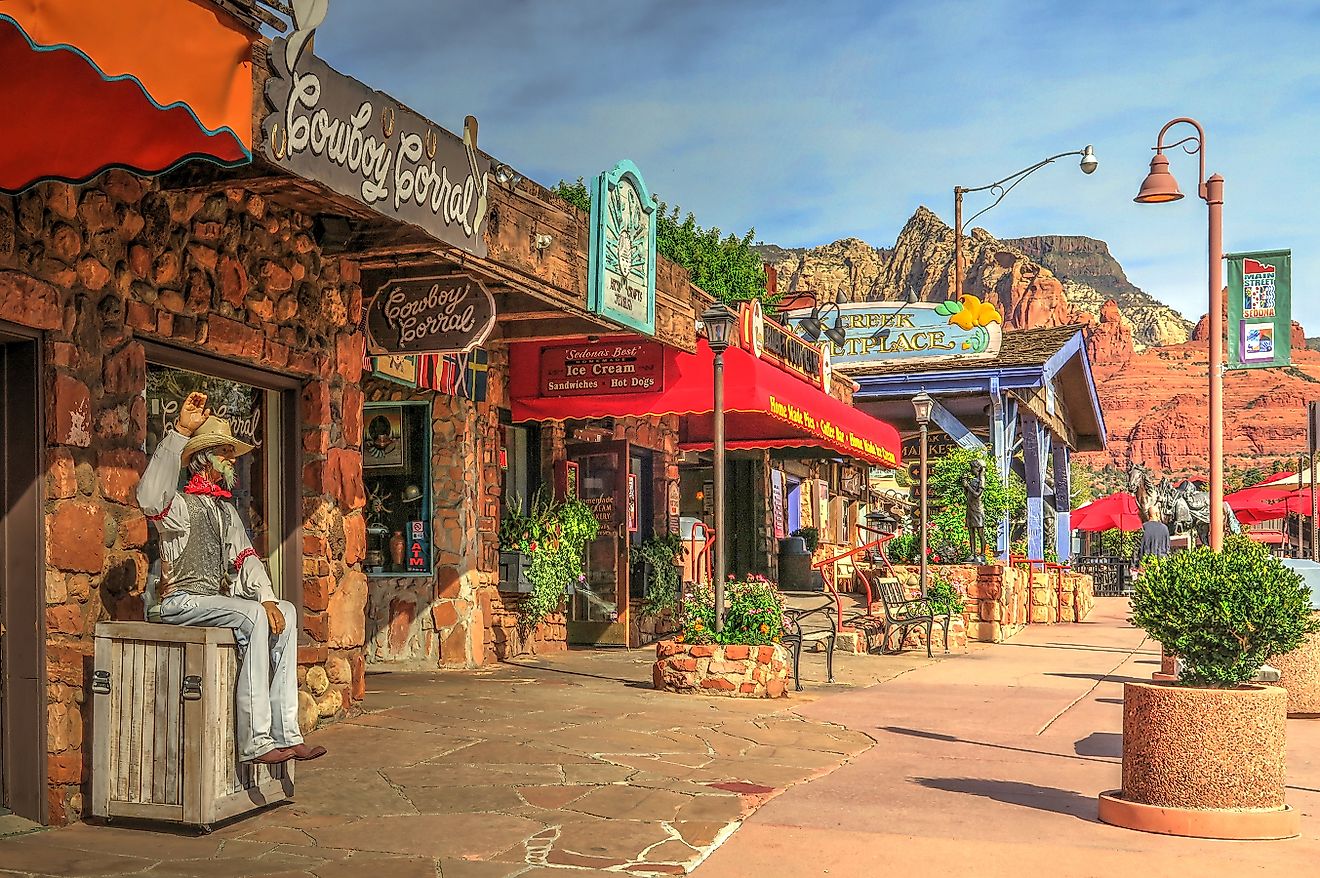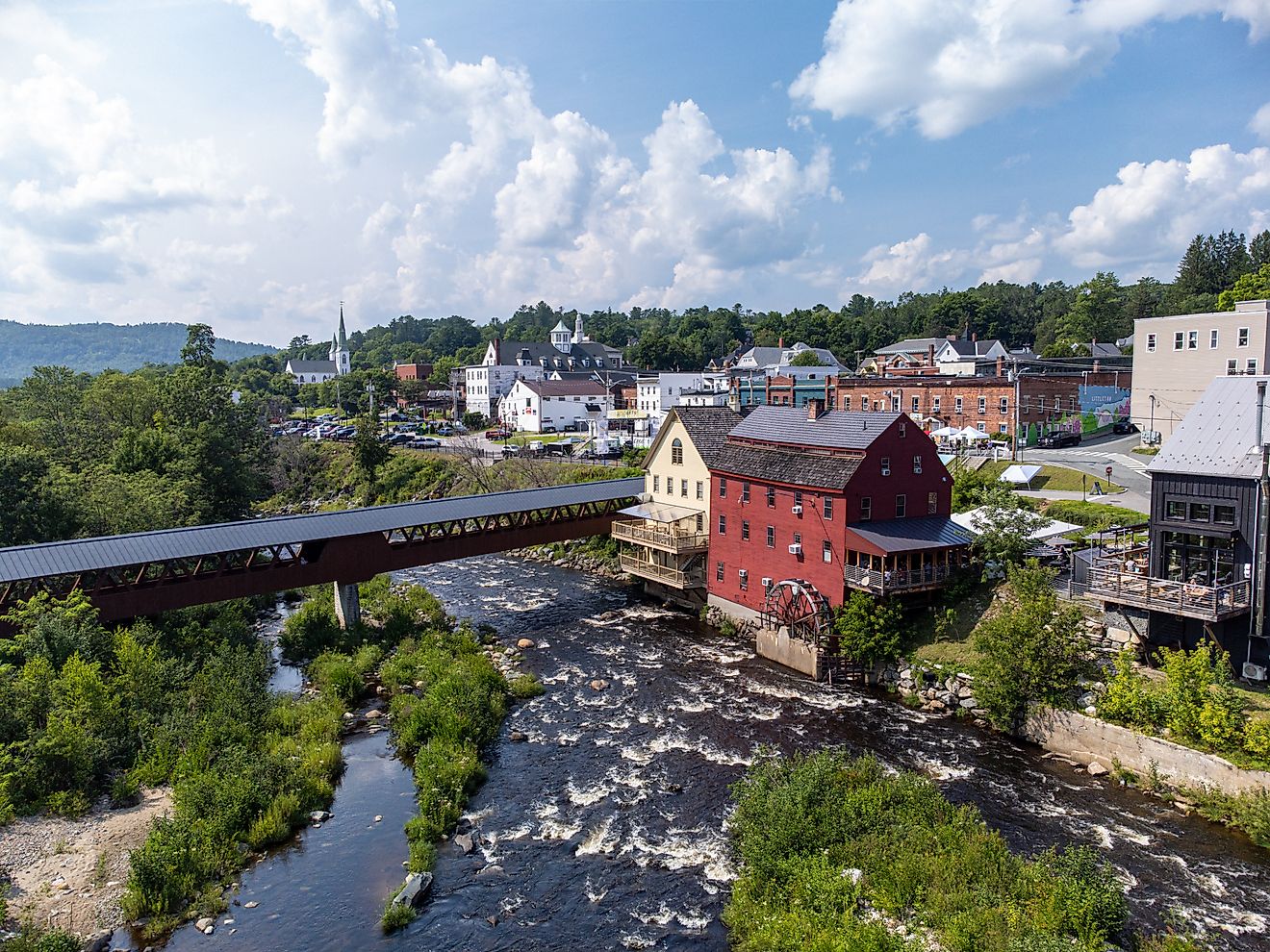Maps of South Sudan
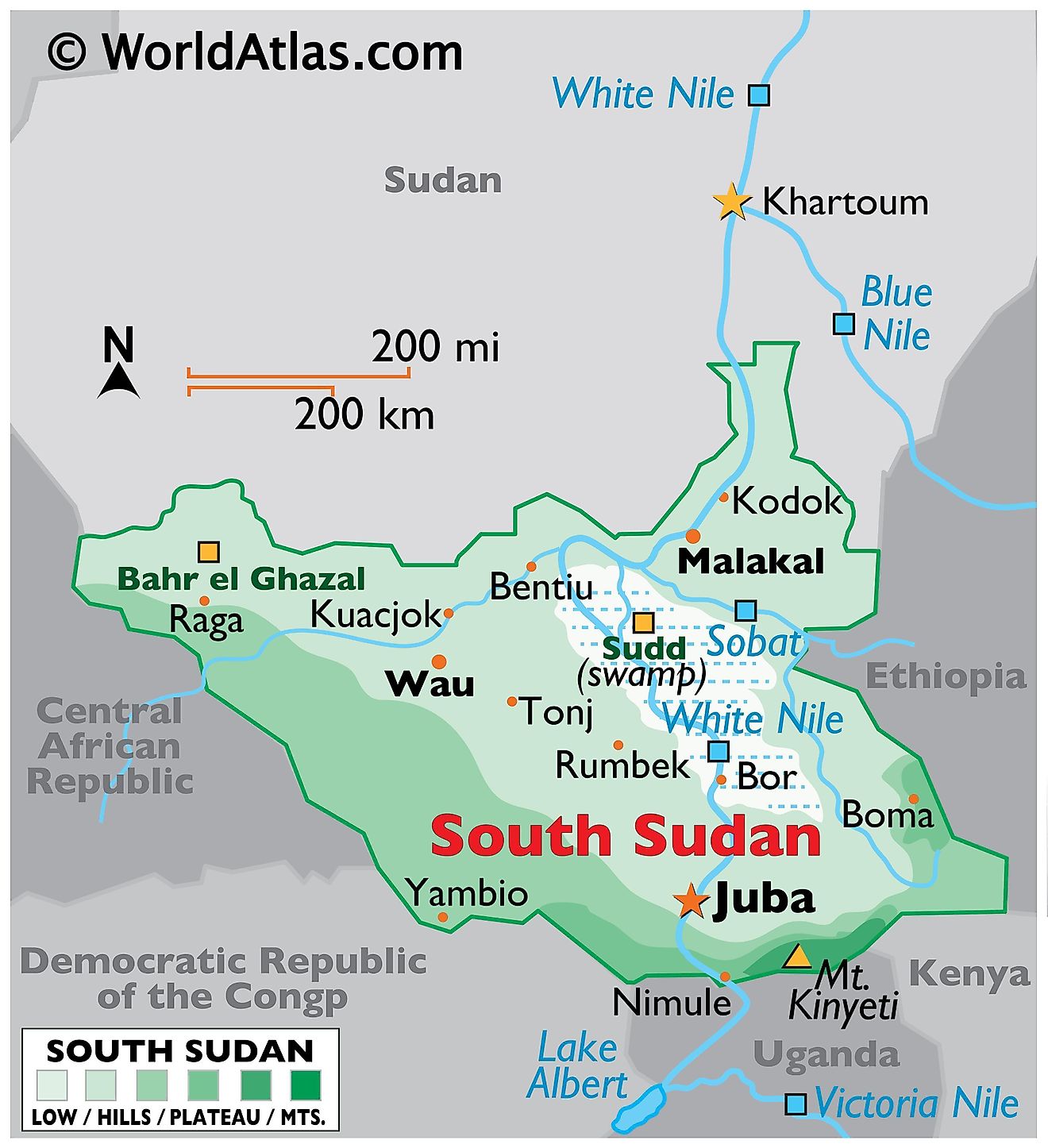
The East-Central African country of South Sudan is one of the newest nations on Earth, only coming into existence in 2011. South Sudan covers a respectable area of around 619,745 sq. km. The Nile River system is the country's dominant physical feature. Most of the rivers of the country drain into the Nile River which leaves the country to enter Sudan and flow further north. The six other nations that border South Sudan are Uganda, Ethiopia, Kenya, Sudan, the Central African Republic, and the Democratic Republic of the Congo.
Massive plains and plateaus stretch across South Sudan. One of the most interesting landforms here is the Al Sudd region which is a large swampy land located in the central region of a clay plain occupying the heart of South Sudan. Between the clay plain and the Nile-Congo watershed to the west and south of South Sudan is another elevated part of the country, the Ironstone Plateau. This region features relatively flat elevated land with abruptly rising isolated hills called inselbergs.
Two distinct highland areas exist in the country. Tall mountains with peaks exceeding 3,000 m called the Imatong Mountain range occur along South Sudan's border with Uganda. Marked on the physical map above, the 3,187 m tall Mount Kinyeti, the country's highest point, is located in this region.
The Nile River is the most important geographic feature of South Sudan. The longest river in the world, the source of the Nile can be found just south of the border in the neighboring nation of Uganda in Lake Victoria. The river gives the region much-needed access to water for irrigation and farming. Most of the major towns and cities can be found along its banks including the capital city of Juba.
States of South Sudan Map
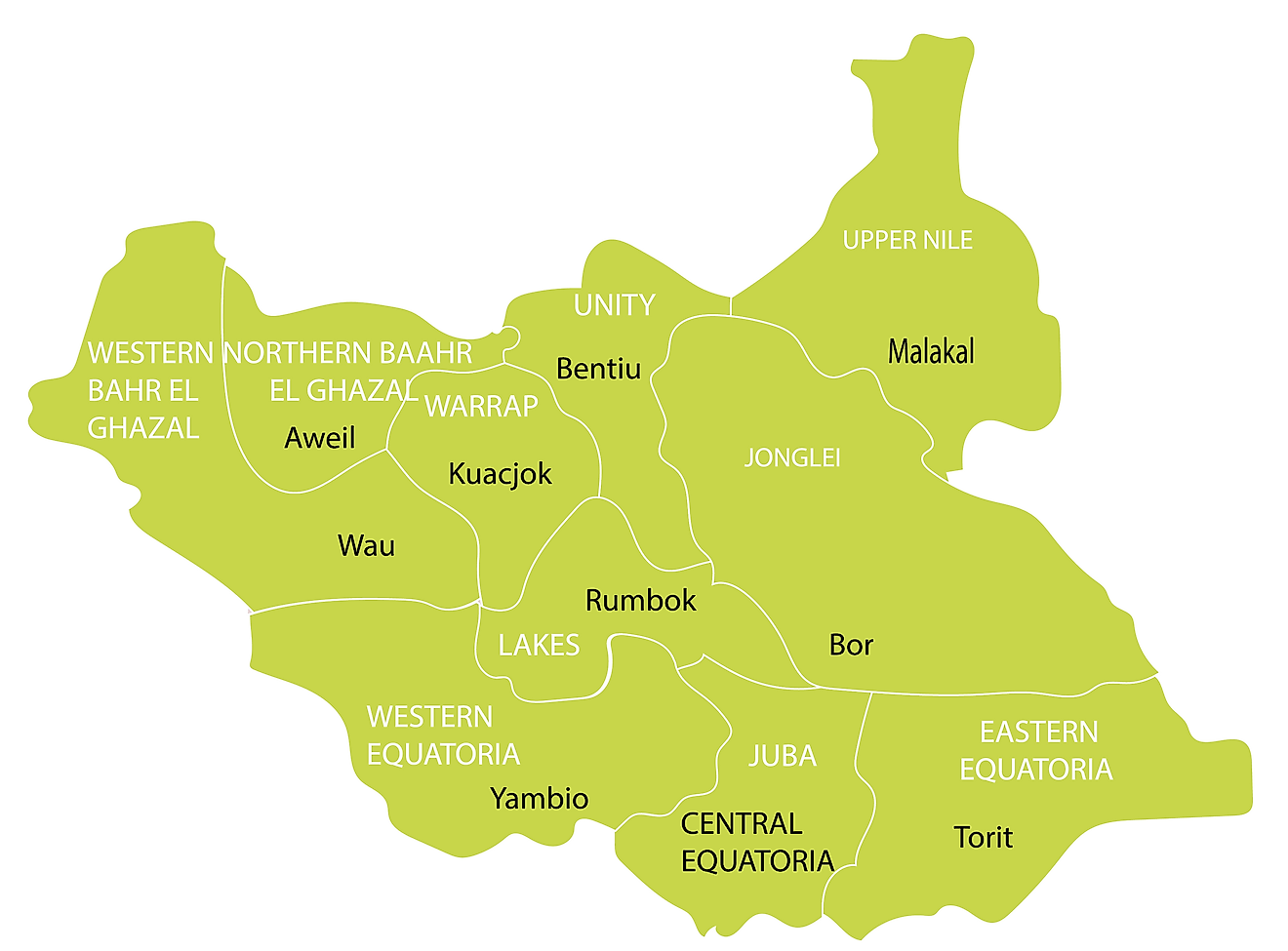
A relatively new country that got its freedom from Sudan in 2011, South Sudan's political divisions underwent a series of changes since independence. Originally composed of 10 states following its birth in 2011, the country was divided into 28 states in 2015 and 32 states in 2017 based on ethnic lines. However, with the end of the South Sudanese Civil War and the signing of a peace agreement, the country returned to its original 10 states in February 2020.
The states have been represented on the political map of the country above. In alphabetical order, they are as follows: Central Equatoria, Eastern Equatoria, Jonglei, Lakes, Northern Bahr el Ghazal, Unity, Upper Nile, Warrap, Western Bahr el Ghazal, and Western Equatoria.
In addition to these states, South Sudan also has two administrative areas Ruweng and Pibor, and a special administrative area of Abyei that is part of both Sudan and South Sudan as per the Comprehensive Peace Agreement of 2005. The capital of South Sudan, Juba, is also the regional capital of the Central Equatoria state.
Where is South Sudan?
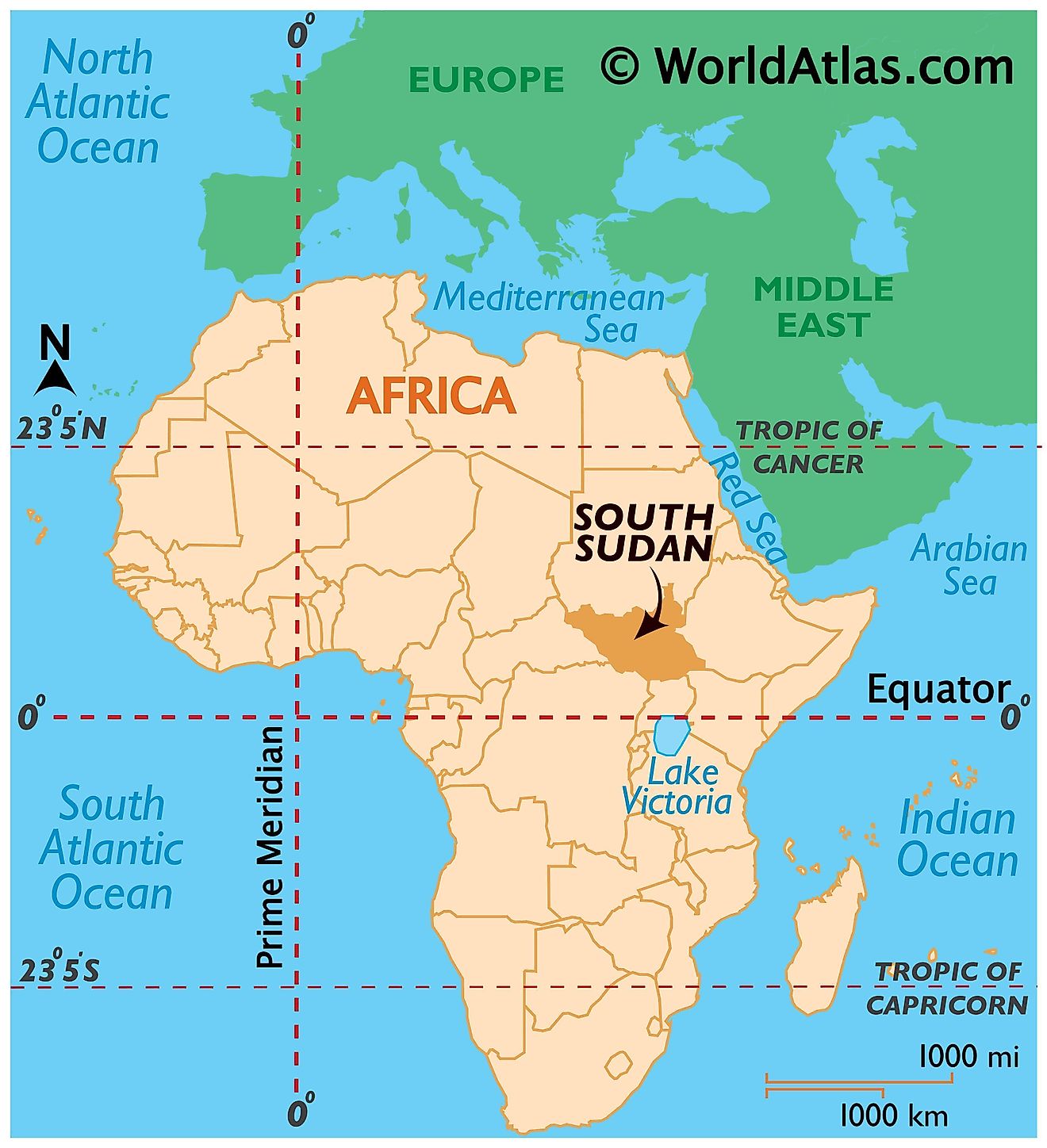
A landlocked country, South Sudan is located in East-Central Africa in the Northern and Eastern Hemispheres of the Earth. Six countries border South Sudan. These are Sudan to the north, Ethiopia to the east, Kenya to the southeast, Uganda to the south, Democratic Republic of the Congo to the southwest, and Central African Republic to the west.
South Sudan Bordering Countries: The Central African Republic, Kenya, Ethiopia, The Sudan, Uganda, The Democratic Republic Of The Congo.
Regional Maps: Map of Africa
Outline Map of South Sudan
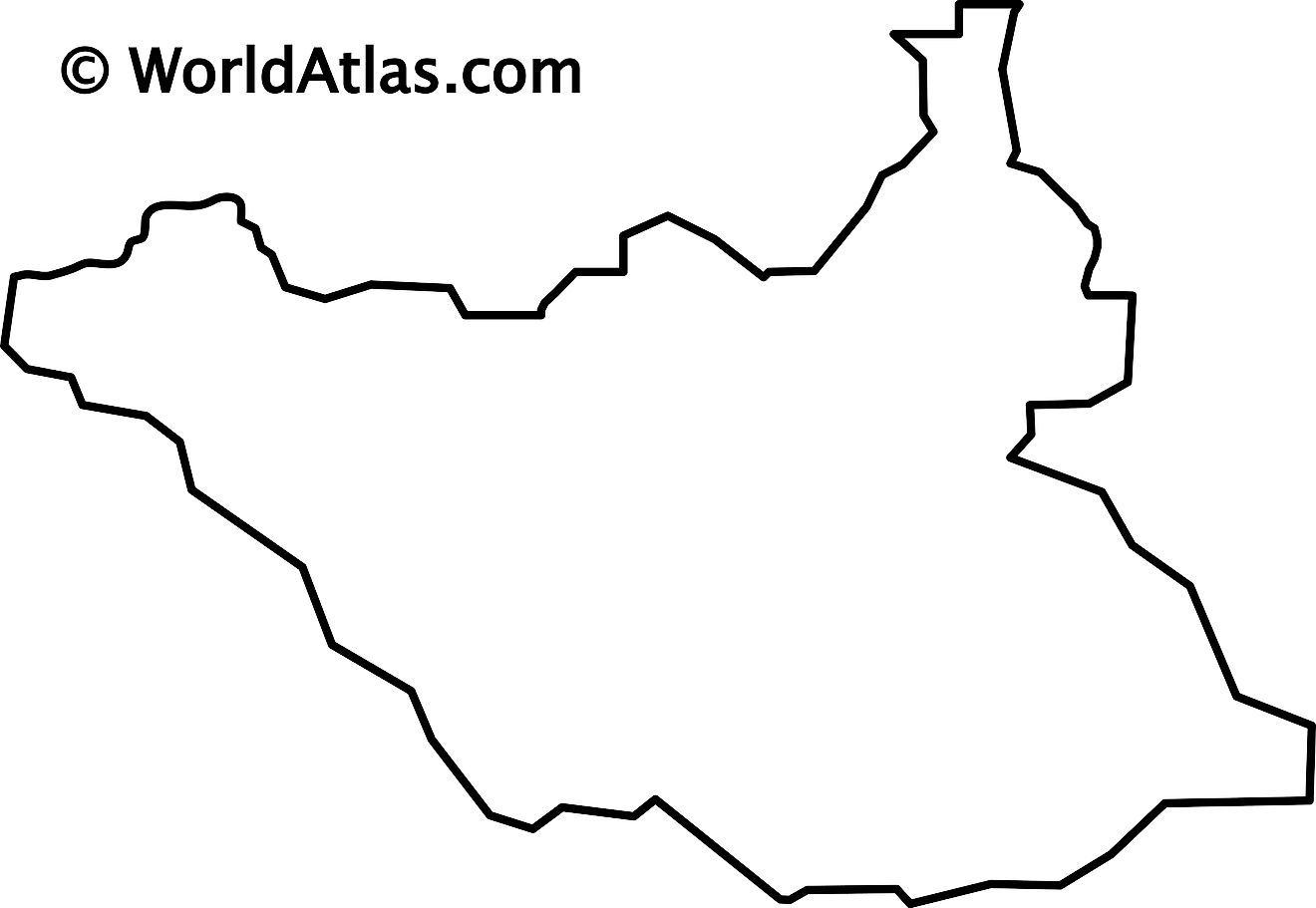
The outline map represents the newly formed country of South Sudan in East-Central Africa. It is a landlocked country. The above map can be downloaded for free and used for educational purposes or coloring.
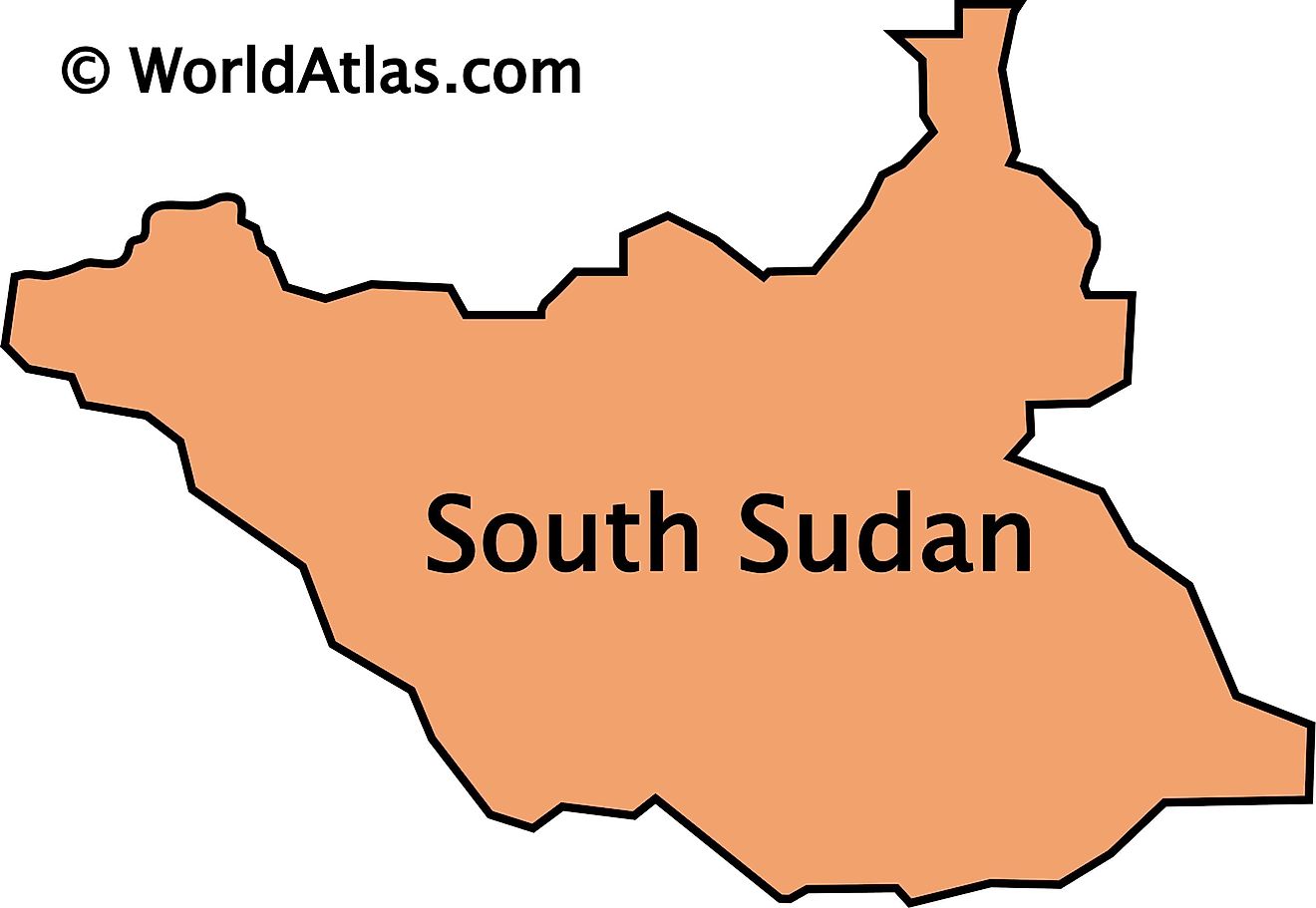
The above map represents South Sudan, a sovereign country in East-Central Africa. It is located to the south Sudan from which it gained independence on July 9, 2011.
Key Facts
| Legal Name | Republic of South Sudan |
|---|---|
| Flag |
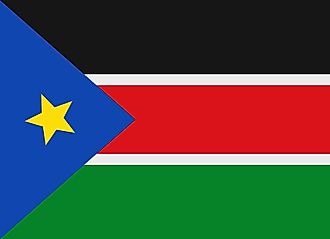
|
| Capital City | Juba |
| 04 51 N, 31 37 E | |
| Total Area | 644,329.00 km2 |
| Land Area | 0.00 km2 |
| Water Area | N/A |
| Population | 11,062,113 |
| Largest City |
Juba (459,342) |
| Currency | South Sudanese pounds (SSP) |
| GDP | $12.00 Billion |
| GDP Per Capita | $1,119.65 |
This page was last updated on December 9, 2023
